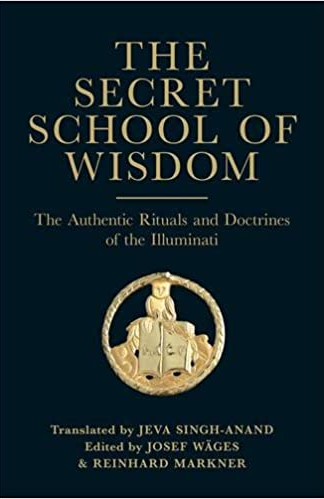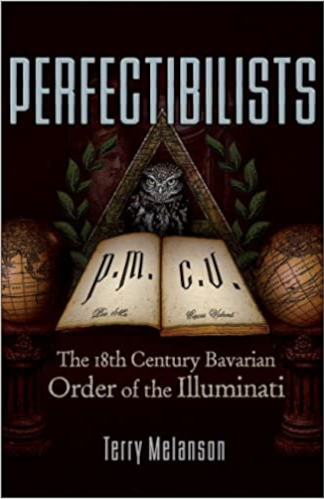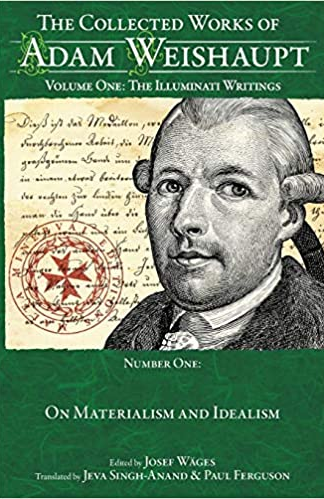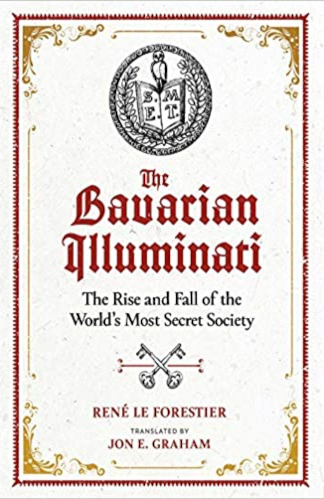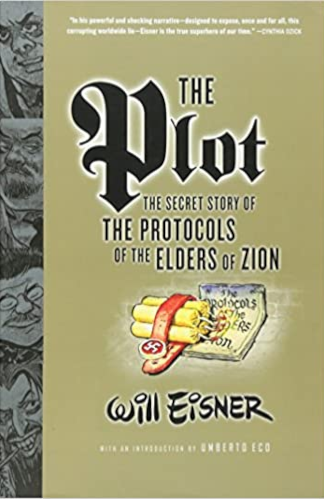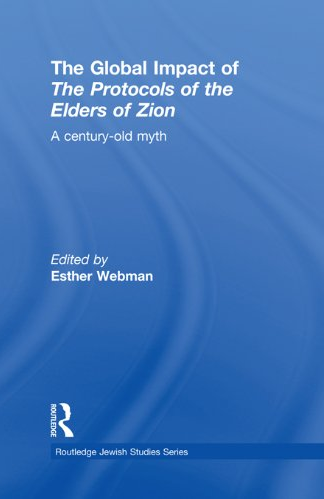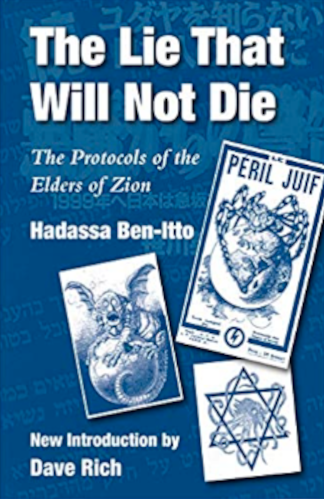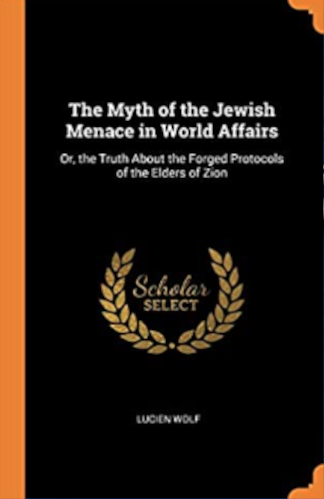First, a short summary:
The Bavarian Illuminati is a secret society that was founded in Bavaria, Germany in 1776 by Adam Weishaupt, a professor of canon law at Ingolstadt University and a former Jesuit. The group was a movement of republican free thought and is probably the most prominent group associated with the name Illuminati. The members of this society aimed to replace Christianity with a religion of reason, and to promote rationalism, Enlightenment ideals, and the idea of a “universal moral society.”.
Adam Weishaupt founded the Order of Illuminati, an organization that has grown to mythical size in the imaginations of wild-eyed keyboard warriors everywhere. In what is now Germany, the change couldn’t come fast enough. Not yet one country, it was divided into smaller city-states, duchies, and principalities, each with its own ruler, laws, and customs.
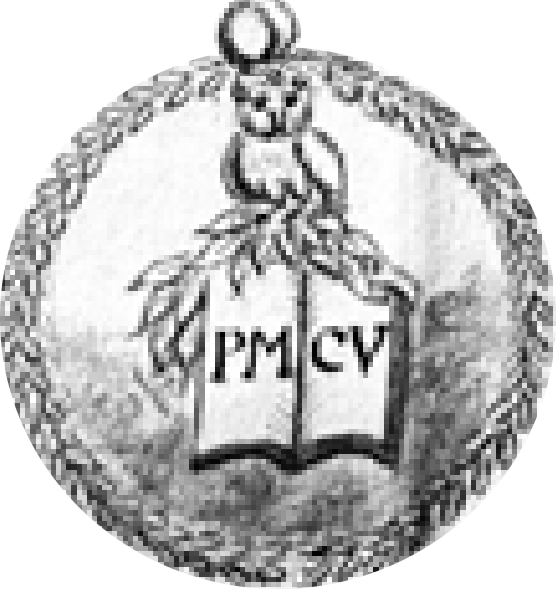
Adam Weishaupt was born on February 6, 1748, in Ingolstadt, in the Electorate of Bavaria. He was orphaned at a young age and was taken care of by his scholarly uncle who enrolled him in a Jesuit school. He founded the Order of the Illuminati, known as the “Bund der Perfektibilisten”, on May 1, 1776, in Ingolstadt with a handful of his best students.
The Bavarian Illuminati society was short-lived and was suppressed by the Bavarian government in 1785, following a campaign led by the Catholic Church and the conservative nobility. The suppression was carried out in the context of a larger political movement in Bavaria and Europe, which sought to curb the influence of the Enlightenment and preserve traditional social and political hierarchies.
Some sources suggest that Adam Weishaupt was believed to have been a devout Christian and had no association with the occult, while other sources suggest that he believed Yahweh, the God of the Bible, was evil and Satan was good and he also believed that Satan had given us enlightenment while God had tried to keep us imprisoned. Both of these sources are not supported by reliable historical records and should be taken with a grain of salt, but it is just a couple of examples of the varying degrees of conspiratorial nonsense hypothesis regarding the order.
The Illuminati scare was also present in America, where some members of the Federalist-Congregationalist clergy attempted to persuade parishioners and politicians that a cabal of European atheists had orchestrated the French Revolution and intended to overthrow religion and government in America as well. This has ultimately fed the conspiracy theories that still continue today, including through conspiracy theorist groups and cults such as the ‘Q’ cult and ‘Qanons’ and a range of authors of several books that have significantly contributed to pouring the fuel of ignorance over the fire of stupidity. Books such as “Proofs of a Conspiracy: Against All The Religions and Governments of Europe”, “Memoirs illustrating the history of Jacobinism” as well as the lie that will not die “The Protocols of the Elders of Zion” etc… More information about these is provided below. The reason for providing these titles is not to propagate the proliferation of these nonsense publications, but to provide a basic awareness to the reader, of the origins of these conspiracy theories and wild imaginations run riot, which unfortunately has had a negative and detrimental effect on society and fraternal organizations such as the Bavarian Illuminati, based on nothing but nonsense, superstition, and complete ignorance.
It’s worth noting that the Bavarian Illuminati was dissolved in 1785 by the Bavarian government, under Elector Karl Theodor, who banned all secret societies including the Illuminati. The reason given was that it was due to the fear that the organization would disrupt the social and political order. Despite the fact that the original Illuminati was dissolved in 1785, the name and the idea of a secretive cabal of powerful and influential individuals have been used in various conspiracy theories and fictional works. Symbols that have been associated with the Illuminati have long been used by many groups and organizations throughout history, including Freemasonry, well before the Illuminati used them. Their use, however, does not necessarily imply any association with the Freemasons. This can be likened to a scenario where the Church of Scientology uses symbolism from the Christian Church, yet in reality, no association between the two exists.
The Bavarian Illuminati is NOT associated with Freemasonry, contrary to conspiratorial belief, which is often portrayed in popular conspiratorial culture as a secretive cabal that controls world events and wields immense power and influence. It is important to note that the founder of the Illuminati, Adam Weishaupt, was a Freemason at one point in time, however at the time Weishaupt founded the Illuminati, Weishaupt was not a Freemason. Weishaupt joined the Freemasons later on, in order to recruit more members for the Illuminati, but was subsequently expelled from the organization.
For those readers that desire more in-depth information about the order, continue scrolling down.
Sources:
https://www.britannica.com/question/What-was-the-Bavarian-illuminati-group
https://www.britannica.com/topic/Bavarian-illuminati
https://www.jstor.org/stable/pdf/3491620.pdf
https://www.thevintagenews.com/2019/01/24/illuminati/
https://bitterwinter.org/the-origins-of-the-bavarian-illuminati/
https://thenewsblender.com/2018/04/debunking-adam-weishaupt-george-washington/
https://darktruth.fandom.com/wiki/Adam_Weishaupt
https://www.britannica.com/topic/illuminati-group-designation
https://www.elitereaders.com/what-is-the-illuminati-answers-about-this-secret-society/
http://amorq.com/article/5040/what-is-the-illuminati-the-answers-to-questions-about-this-secret-society
In-Depth Analysis
Note: Most of the information provided herein, is thanks to the tenacious work of Bro. Josef Wages from the book: The Secret School of Wisdom: The Authentic Rituals and Doctrines of the Illuminati as well as several other dedicated sources specifically for the proliferation of facts rather than conspiracy theories.
Now to the nitty gritty…
Why did the Illuminati use the owl of Minerva in their logo?
The Owl of Minerva is a symbol that has been used throughout history to represent wisdom and knowledge. The symbol is derived from Roman mythology, where the owl was associated with the goddess of wisdom, Minerva. In this context, the owl represents the wisdom and knowledge that Minerva possesses.

The symbol of the Owl of Minerva became particularly relevant in the works of the German philosopher Georg Wilhelm Friedrich Hegel, who wrote in his “Preface to the Philosophy of Right”: “When philosophy paints its grey in grey, then has a shape of life grown old. The owl of Minerva spreads its wings only with the coming of the dusk.”. This statement means that the kinds of self-conscious reflection making up philosophy can occur only when a way of life is sufficiently mature to be already passing. This idea of the owl of Minerva spreads its wings at dusk is interpreted as the end of history, the setting of the sun in his image.
Hegel believed that the loss of philosophy would have far-reaching consequences, so he sought to restore the old dominance that philosophy had once held in intellectual society. He believed that the owl of Minerva represents the wisdom and knowledge that can only be gained by understanding the past and how it has shaped the present.
In addition to its historical and philosophical significance, the owl of Minerva has been used in various contexts to represent wisdom and knowledge. For example, it is the name of a peer-reviewed journal that welcomes work from any discipline that deals with Hegel’s thought in a rigorous, systematic way, including philosophy, religion, history, literature, law, economics, and the social sciences.
Moreover, the Owl of Minerva is not only associated with the end of an era but also with the ability to understand and mitigate the consequences of past events. The symbol of the Owl of Minerva flies at dusk implies that wisdom and knowledge come after an experience and suffering, it is a symbol that reminds us that we can only think about how to mitigate the negative consequences of certain events after we have identified them.
Foundations Of The Order
Adam Weishaupt, a professor of law at the University of Ingolstadt in Bavaria, Germany, founded the Order of the Bavarian Illuminati on May 1, 1776. The organization’s original purpose was to promote Enlightenment ideals such as reason, liberty, and fraternity, and to oppose superstition, prejudice, and religious influence over public life. He did this by forming a secret society that was modeled on the Freemasons, but with a focus on education and the development of critical thinking skills.
Adam Weishaupt was born on February 6, 1748, in Ingolstadt, in the Electorate of Bavaria (part of modern-day Germany). He was the son of Johann Georg Weishaupt, a law professor at the University of Ingolstadt. His father died when Adam was five years old, and he came under the tutelage of his godfather, Johann Adam Freiherr von Ickstatt, who was also a law professor at the University of Ingolstadt. On May 1, 1776, Adam Weishaupt gathered a handful of his best students and founded the “Bund der Perfektibilisten”, or “Covenant of Perfectibility”. The name of his organization was changed two years later to “Illuminatenorden”, or the Order of Illuminati. Weishaupt’s goal was to replace Christianity with a religion of reason.
Weishaupt sought to replace Christianity with a religion of reason because he believed that reason and morality were the highest levels of humanity and that these principles, based on the Golden Rule of not doing to others what one would not wish done to oneself, could be used to influence society in a positive way. He envisioned that if followers of the Illuminati attained positions of power and influence in fields such as education and politics, they could use their knowledge and power to improve society as a whole.
In order to achieve this, Weishaupt would have to recruit members of a particular caliber. Initially, he gathered a small group of students and began to educate them on the principles of the Enlightenment, with the goal of creating an organization that could act as a counterweight to religion. He also used a secretive and elaborate network of spies and counter-spies, where each isolated cell of initiates reported to a superior, whom they did not know, a party structure that was effectively adopted by some later groups. In 1777, Weishaupt was initiated into the Masonic lodge Theodor Zum Guten Rath, at Munich, and used their fraternity as a place to find well-connected society men who were already acquainted with, and interested in, secret societies. He also had his members try to penetrate other societies and keep a close eye on everything that was printed. If something was published and attracted attention, they would try to recruit the writer. If he did not accept, they would denounce him. Weishaupt was not very successful at recruiting many men from Freemasonry, thus after a short period of time, Weishaupt resigned from Freemasonry to continue with his own Illuminati.
The Degree Structure
Contrary to popular belief, the structure and rituals of the Illuminati were not fully developed at the time of its inception in 1776. Rather, they underwent a process of evolution throughout the brief duration of the organization’s existence. According to Knigge’s account in “Philo’s Reply,” (Knigge was one of the key figures in the organization and was responsible for recruiting new members and helping to develop the organization’s structure and rituals. He is known for his account of the Illuminati in his work “Philo’s Reply” which is considered an important source of information about the organization’s history and practices), many degrees had not even been formalized at the time of his involvement with the order. Notably, the two highest degrees, Magus and Rex, were never fully realized. Only the lectures for these degrees were written and the Rex degree appears to be a collection of bullet points around which the rituals were intended to be built. Martin Mulsow, in his work “Adam Weishaupt also Philosoph,” suggests that the Rex degree existed in its current form no later than 1784. The degree’s argument is extensively outlined in Weishaupt’s treatise “Ueber Materialismus und Idealismus” written in 1787 Grattenauer, Nuremberg. However, for various reasons, the Rex degree was not well received within the order, ultimately leading to the end of Weishaupt’s tenure with the organization.
The Final Degree System of the Illuminati Order.
(No, it’s not 95 degrees, but actually only 11 degrees!)
I. Minerval Class.
- Noviciate
- Minerval Degree.
- Minervalis Illuminatus, or Illuminatus Minor.
To the right: “The Minerval Medallion, an open-work piece made of gilded metal, which is worn by the Minerals around the neck on a ribbon, [grass-green and] three fingers wide, while the Directing Minervals wear it on a slightly wider ribbon of the same color from right to left”.
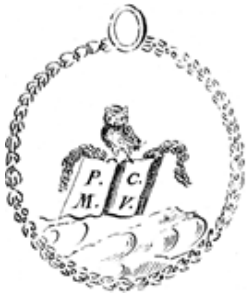
The sign is made by holding the hand flat over the eyes, as one does when blinded by a light. The grip is given by taking the other man’s hand and softly tapping it three times with the little finger. Each year two watchwords are given, the name of a place and that of a man. One might ask, for example: ‘where does the light shine brightest?’ Answer: ‘In Sagunto’. Another could be ‘Who sees it the brightest? Answer: ‘Hanno’.
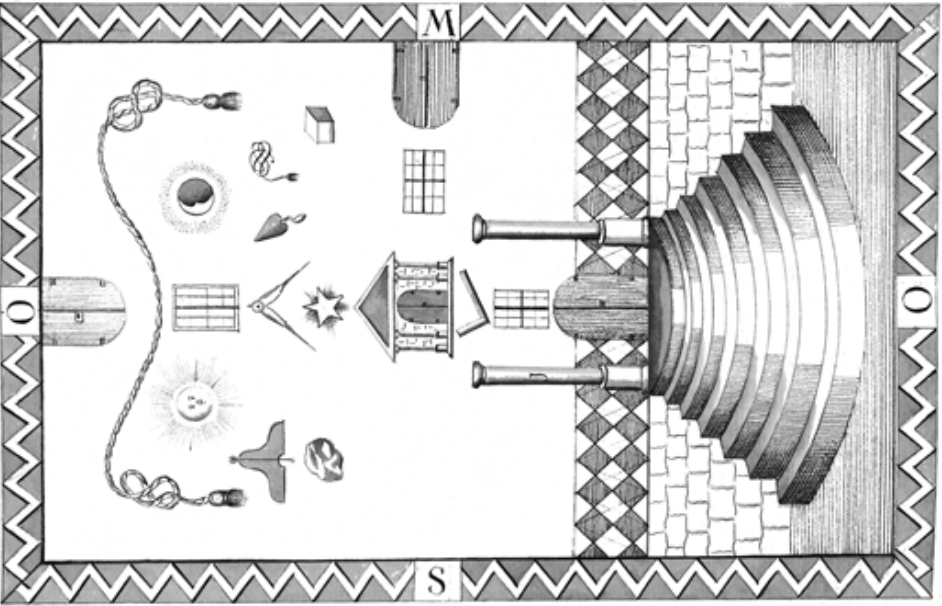
II. Freemasonic Class
- Apprentice Degree
- Fellowcraft Degree
- Master Mason Lodge. (Symbolic Freemasonry).
- Illuminatus Major. Greater Illuminati or Scottish Novice.
- Illuminatus Dirgens. Scottish Knight.
—
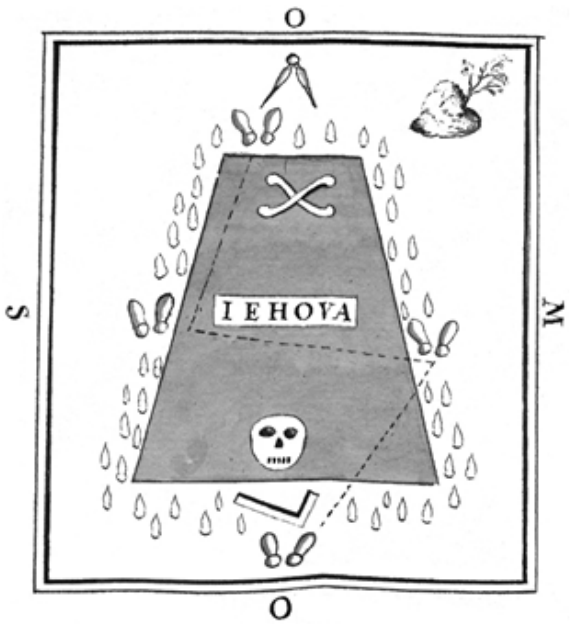
—
III. Mysteries Class
- Lesser Mysteries
I.) Lesser Priest Degree. Presbyter.
II.) Lesser Regent Degree. Princeps. - Greater Mysteries
I.) Docetists.
II.) Philosophi. Sages
—

—
Proper Essential Officers in every Lodge are:
A) The Worshipful Master.
B) The Deputy Master.
C) The Senior Warden.
D) The Junior Warden.
E) The Secretary.
F) The Treasurer.
G) The Master of Ceremonies.
Non Essential Officers are:
H) The Almoner.
I) The Housekeeper.
K) The Orator.
L) Steward
M) Steward
N) The Sick Visitor.
O) The Decorator.
P) The Librarian.
Special Instructions for Officers:
FOR THE DEPUTY W. M.
- This office is always filled by the past year’s W. M.
- He is the Provincial Lodge’s representative.
- In the absence of W. M., or if he cannot attend, he takes his place.
- He wears a compass on his breast.
- If the Lodge has educational institutions, he is their immediate director.
- During the term of his office, he is relieved from paying monthly dues.
FOR THE SENIOR WARDEN.
In addition to his duties evident from the ritual, he shall:
- Watch over the Brethren’s morals and good order in all things.
- Inform the W. M. of anything that is important to Freemasonry.
- If the Lodge has established economic enterprises, e.g. trading companies or
the like, then he and the Treasurer are their immediate directors. - He wears the scales on his breast and wields a gavel.
- During the term of his office, he is relieved from paying monthly dues.
FOR THE JUNIOR WARDEN.
In addition to taking part in the ritual, he must also:
- Oversee the political demeanor, prudence, and discretion of the Brethren.
- Report anything falling into this category to the W. M.
- His particular field includes complaints, news, and anything that may affect the Order and its members politically.
- He wears a plumb on his breast and wields a gavel.
- He pays no monthly dues while he is in office.
FOR THE SECRETARY.
- In each Lodge, he records and signs the minutes in a special book and presents it to the W. M. for signing.
- He maintains the membership register, noting therein any changes concerning the members’ careers both inside and outside the 1.
- He maintains a book in which visiting Brethren enter their names.
- In the Lodge, he reads out the by-laws, constitutional articles, letters, etc.
- He maintains the correspondence, but before mailing any letters he must always submit them to the Officers Lodge, as well as the replies.
- He maintains a correspondence record.
- He maintains a ledger for any postage and writing materials, collects the monthly dues from the absent Brethren, endeavors to benefit the Lodge by us-
ing prepaid addresses, and tries to increase this fund. - He keeps the archives in order, stores them in the Lodge house, and takes letters home as rarely as possible.
- At the bidding of the Master, he gives notice of the Lodges, either orally or by means of a circular.
- Shortly before St. John’s Day, he reminds the Brethren to submit their nomination slips for the election of the Master.
- He opens the deposit box during every Lodge and gives a report to the W. M.
- He makes notes of any news that he must communicate to the absent members.
- He collects the ballots and balls.
- He shall maintain the strictest confidentiality about any matters concerning his office.
- On St. John’s Day, he surrenders his books to the Officers Lodge and turns over any surplus of his fund to the Treasurer against receipt.
- He may request the assistance of younger Brethren and make proposals in this regard.
- He pays no monthly dues while he is in office.
FOR THE TREASURER.
- He is responsible for collecting the initiation fees and for the general management of the main fund; he also holds the counter-lock to the money box.
- He advises W. M. on how to dispose of the funds.
- He disburses a certain amount of the initiation fees to the household fund, namely one-tenth for each degree.
- Just as he collects any surplus funds, he must also reimburse any advances paid with the Officers Lodge’s permission.
- Every year on St. John’s Day he renders an account to the Officers Lodge and hands over the money box.
- He co-directs all major financial institutions operated by the Lodge.
- He wears two keys on his breast.
- During the term of his office, he pays no monthly dues.
FOR THE MASTER OF CEREMONIES
- ensures adherence to the prescribed ceremonies.
- He assigns every Brother his proper place.
- Outside and visiting Brethren are referred to him, and it is his responsibility to examine them.
- He ensures the proper appearance of everything in the Lodge, e.g. the preparation and serving of the dishes during the Table Lodge, etc.
- He must make the stay pleasant for traveling Brethren and provide them with addresses.
- He is used in all deputations to princes, other Lodges, the dicasteries, etc.
- He must ensure that the Brethren are always dressed appropriately in the Lodge. The Entered Apprentices wear white lambskin aprons, while the Fellow Crafts’ aprons include a small band, and those of the Master Masons have a blue lining. Apart from this, no insignia of any authentic or false degree may be worn.
- He carries a sword in his hand and wears one on his breast.
FOR THE ALMONER.
- He collects donations for the poor in every Lodge.
- He collects the fines.
- After the closing of the Lodge, he counts the amount received and records it. The W. M., who holds the counter-lock, then signs the record.
- He turns over his ledger and the money box to the Officers Lodge on St. John’s Day, but this fund is always kept separate.
- On the direction of the W.M., he pays the poor the amounts approved by the Lodge. Preference should be given to poor but honest Brethren.
- If funds permit he shall offer proposals on how to invest the money, but funds must never be reduced to a few guilders, and he must notify the Lodge
before they are. - He carries an alms bag and wears a blazing heart on his breast.
- He is the principal director of all poverty relief and health institutions operated by the Lodge.
FOR THE HOUSEKEEPER.
- He collects the monthly dues and receives one-tenth of the initiation fees collected by the Treasurer.
- In return, he arranges payment of the rent for the Lodge house, procures the lights, aprons, gloves, and membership insignia, pays the wages to the serving Brethren, etc.
- He keeps a ledger for this and hands it over to the Officers Lodge on St. John’s Day, remitting any surplus funds over to the Treasurer. The W. M. has the counter-lock.
- He orders the food, pays for it, and collects the money required for this purpose from the Brethren.
- He wears the Lodge’s coat of arms on his breast.
- He directs all of the Lodge’s minor economic enterprises, e.g. renting out houses that it may own, seeing to their construction and upkeep, etc., and he must seek to increase this fund.
- Like the six officers above he pays no monthly dues while in office.
FOR THE ORATOR.
- At W. M.’s bidding, he must be prepared to deliver a speech at every Lodge as well as to speak on behalf of the Lodge at any festive occasion.
- He must first present his speech to the W. M. for examination.
- He wears a scroll (reproduced in metal) on his breast.
- He co-directs all educational and scientific institutions.
FOR THE STEWARDS.
- In general, they ensure good order in the Lodge.
- They step forward on festive occasions.
- They must be prepared to assist the other officers in their duties.
- They carry rods in their hands and on their breast.
FOR THE SICK VISITOR.
- If he knows of a sick Brother, he must be at his disposal and see to it that he is not lacking in care and upkeep and, if necessary, report this to the officers
Lodge so that any relevant decisions can be made there. - If the Lodge operates any healthcare facilities, hospitals, or the like, he and the Almoner direct them.
- He wears a cross on his breast.
- He shall ensure that no letters or other Masonic items remain with very ill Brethren.
FOR THE DECORATOR.
- He ensures that the Lodges are properly decorated, that the lights are lit and extinguished at the proper times, etc., and that everything is clean.
- He gives notice when something new must be purchased and receives instructions on how to obtain the funds for this purpose, and whether or not it is to be paid for from the housekeeping fund.
- He then procures it, submits the receipts on St. John’s Day, keeps everything under lock and key, and turns over the keys at the end of the year.
- As far as is feasible he shall set up the decorations in such a manner that everything is movable and can be installed and uninstalled with ease.
- He wears two lit candles, reproduced in metal on his breast.
- If the Lodge operates craftsman’s workshops or factories, he co-directs them.
FOR THE LIBRARIAN
- keeps the book collection in order and sees to its preservation and augmentation to the best of his ability.
- He returns the list of books, the books themselves, and the keys in due order on St. John’s Day.
- If the Lodge owns cabinets, manuscripts, etc. (which do not form part of the archives), he has oversight over them.
- If the Lodge operates educational or other learned institutions, he co-directs them.
- He wears a book on his breast.
Degree Creation Time Frames:
Minerval Maxim: “Quidquid agis, age prudente et respice finem.”
[Whatever you do, do what is prudent and consider the outcome].
May 1, 1776.
The Order of the Perfectibilists (Illuminati) was founded.
October 31, 1777.
Weishaupt was developing the system. It was to have 3 classes: Preparatory Class or Novice, a second class, not otherwise mentioned and a third Class called Mysteries.
1778.
Weishaupt was supposed to finish the specifications for the second class in November, but it this not materialize.
1779.
Weishaupt wrote the book for the second class, naming it the Minerval Degree. The names changed: Illuminati Degree, second degree, Minerval Class, or Assembly. The first Assembly was held at Ferdinand Maria Baader’s home on Feb. 16, 1779. In mid-1779, Weishaupt delivers three booklets containing the higher degrees:
• Novice
• Minerval,
• Minerval Illuminatus,
However, the Mysteries remained fragmentary.
July 7, 1781.
Knigge was made a member of the Areopagite Council and they adopted the “Shared Decision.” They admitted they would fail if it were not for Knigge. This expanded the existing degrees of Minerval, Illuminatus Minor, and the basics of Illuminatus Major.
Knigge’s goal was to make the Order no longer a collection of students led by teachers. The Order’s principle was now to fight superstition, despotism, and tyranny.
March 20, 1781
Weishaupt outlines a merger of the Order and Freemasonry. Minervals were to merge with apprentices, Illuminati Minors with Fellow Crafts, and Illuminati Majors with Masters. The degree of Illuminati Dirigens existed in name only and had no content as of yet.
May 26, 1781
Weishaupt wrote to Cato (Xavier von Zwack, 1785-1843) that he was requesting a Constitution from London and that he did not like the Freemasonic degrees proposed by Knigge, but the energy for the makeover seemed to be missing. The Aeropagites realized that the founder was not capable of integrating the Masonic system into the Order. Knigge was allowed to appoint an unlimited number of men in the Aeropagus. With the agreement of the Aeropagus Knigge divided the Freemasons and the Illuminati, building the structure above Masonry starting with Illuminatus Major. Knigge had to submit to the Aeropagus the final editing of the degrees of the Mysteries.
“Recess among the Aeropagites”
December 20, 1781
Recess among the Areopagite. The Aeropagus agreed to submit to Adam Weishaupt but was given the power to govern the whole Order.
“Convention of Munich”
March 21, 1782
The Illuminati broke ties with the Royal York Lodge (March 25, 1782) and established a
new Masonic system over the three symbolic degrees. It established a line of Superiors.
The Minerval Assemblies were to be led by Illuminati Minors. Lodges were to be led by
Scottish Knights. This made the break with Royal York official, taking some 121 lodges
under its care. It decided on a new Masonic system to take over the three symbolic
degrees. It approved the organizational plan of Knigge as submitted on January 20, 1782.
This is the final system as we know it today.
(1)Comment by Jeva: Scholars, such as Dr. Monika Neugebauer-Wölk, Dr. Martin Mulsow,
and Reinhard Markner agree that “Doceten” is derived from Docetism (from the Greek
δοκεῖν [dokein: seem, appear]). Docetism, which is related to Gnosticism and
Adoptionism, argues that the physical body of Christ was an illusion or phantasm
because an infinite and eternal God cannot die. A variant of docetism teaches that Jesus
was not the deity descended, but a human being who had been chosen to teach the
Gospel to his disciples. Docetism was rejected as heresy by the First Council of Nicea in
325.
Sources and Additional resources for :
Book: The Secret School of Wisdom: The Authentic Rituals and Doctrines of the Illuminati
https://www.amazon.com/Secret-School-Wisdom-Authentic-Illuminati/dp/0853184933
https://www.conspiracyarchive.com/2018/10/09/joe-wages-interview-illuminati-primary-source-material/
https://database.factgrid.de/wiki/FactGrid:The_Gotha_Illuminati_Research_Base
The So-Called Schwedenkiste (“Swedish Box”), the Most Significant Illuminati Archive
https://www.conspiracyarchive.com/2015/07/28/the-so-called-schwedenkiste-swedish-box-the-most-significant-illuminati-archive/
Markner Et. Al., Die MOVE Korrespondenz, TO ‘Baader CHAPTER To Costanzo, Munich, 7.5.1780 3
https://www.scribd.com/document/390512603/Markner-Et-Al-Die-Korrespondenz-Baader-to-Costanzo-Munich-7-5-1780-2005-Pp-154-57-Tr-T-Melanson-J-Wages
Origins of the Bavarian Illuminati
https://illuminatiofbavaria.wordpress.com/article/the-illuminati-of-bavaria-origins-of-1vn6fdl0grm02-7/
Illuminati of Bavaria
https://sites.google.com/site/illuminatiofbavaria/
The truth about the Bavarian Illuminati
https://bavarianilluminati.wordpress.com/
Perfectibilists: The 18th Century Bavarian Order of the Illuminati
https://www.amazon.com/Perfectibilists-Century-Bavarian-Order-Illuminati/dp/0977795381
Illuminati Conspiracy Part One: A Precise Exegesis on the Available Evidence
https://www.conspiracyarchive.com/2014/01/29/illuminati-conspiracy-part-one/
Progression of the Illuminati Ritual
https://bavarianilluminati.wordpress.com/2013/12/21/progression-of-the-illuminati-ritual/
Adolph Freiherr Knigge
https://en.wikipedia.org/wiki/Adolph_Freiherr_Knigge
Illuminati Degree: Scottish Novice (Illum. Major)
https://bavarianilluminati.wordpress.com/2013/07/31/illuminati-degree-scottish-novice-illum-major/
https://www.facebook.com/complex/posts/illuminati-101-everything-you-need-to-know-about-the-illuminati-summed-up-here/10153757498354367/
https://www.facebook.com/watch/?v=516235042542074
https://www.facebook.com/watch/?v=2015206675286871
https://www.disinfo.eu/publications/want-to-get-rich-apply-today-and-join-the-illuminati/
Which Conspiracy Theory Sources have fueled the conspiracy theories that claim Illuminati is the same as Freemasonry and why the two are often intertwined and confused?
(A) Contemporary Conspiracy Theory sources are from the following books:
1/ Proofs of a Conspiracy: Against All The Religions and Governments Of Europe, Carried On In The Secret Meetings of Freemasons, Illuminati, and Reading Societies.
https://www.amazon.com/Proofs-Conspiracy-Governments-Freemasons-Illuminati/dp/1502306387/
2/ Memoirs illustrating the history of Jacobinism
https://www.amazon.com/Memoirs-illustrating-history-jacobinism-Barruel/dp/0964115050/
(B) Modern Conspiracy Theory sources are from the following books:
1/ The Secret Story of The Protocols of the Elders of Zion
https://www.britannica.com/topic/Protocols-of-the-Elders-of-Zion
2/ The Illuminati: The Secret Society That Hijacked the World
https://www.amazon.com/The-Illuminati-Jim-Marrs-audiobook/dp/B07FGG6V5X/
3/ Roosevelt’s Communist Manifesto & Science of Government Founded on Natural Law
https://www.amazon.com/Roosevelts-Communist-Manifesto-Science-Government/dp/B000MS5XWA/
Thus, the group of (A) Contemporary and (B) Modern Conspiracy theories result in the disempowerment of the individual and removes any motivation to ‘fix the world’, promoting sitting back and doing nothing about it, because it’s gonna happen anyway…
Those that know the current state of affairs in relation to conspiracy theories, should find the above statement very familiar… but for those that do not, it is very simple. The Q-Cult phenomena! It is a copy of the ‘Operation Trust’ psy-op run in the 1920s by the Bolshevic regime, source here for more details on that. It’s the exact same playbook, exact same rhetoric, inclusive of narratives and rhetoric contained within the Protocols of the Elders of Zion, only this time it has layer upon layer of lie upon lie over tens of years.
Note: The names of the books responsible have been provided, not to promote or advertise them but to bring awareness about who and where these idiotic and disgraceful conspiracy theories come from, so that people are educated and know the exact origins and will not continue to spread lies any longer as they will be educated enough to know better. However as one can see, most of these theories are based on religious extremism and fundamentalism, predominantly from the Christian extremist community.
Below, is a list of books highly recommended to read regarding the Illuminati and the protocols of the Elders of Zion lie, which has been mostly responsible for the proliferation of the Illuminati lie.
